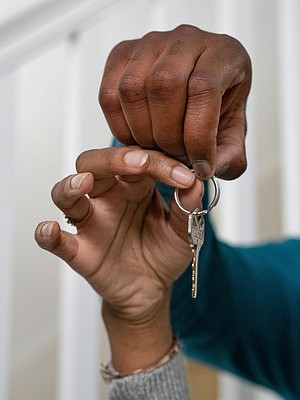6/12/2025

According to the National Association of Home Builders, nearly 75 percent of families – 100.6 million households – cannot afford a median priced new home in 2025. With a price tag of $459,826 and an accompanying 30-year mortgage rate of about 6.5 percent, it’s no surprise that both families and government are challenged like never before when it comes to securing affordable housing.
For much of Black America, affording a home is even harder due to pernicious and persistent income and wealth inequality. A February analysis of Census Bureau data by Lending Tree found that:
- Black households earned a median income of $56,490 in 2023-- 33 percent less than the $84,630 earned by white households;
- Black Americans hold 3.4 percent of the nation’s wealth, although they make up 13.7 percent of the population, while white Americans hold 84.2 percent of national wealth, while making up 58.4 percent of the population; and
- Black workers earned a median of $962 weekly in the third quarter of 2024, versus $1,184 among white workers.
Despite these disturbing figures, the proposed fiscal year (FY) 2026 budget for the Department of Housing and Urban Development (HUD) would walk away from affordable housing concerns. The proposed budget reductions will eliminate long-standing programs and further reduce HUD staffing, while giving states block grants to craft their own versions of programs and funding priorities.
“President Trump’s bold budget proposes a reimagining of how the federal government addresses affordable housing and community development,” said HUD Secretary Scott Turner in a written statement. “Importantly, it furthers our mission-minded approach at HUD of taking inventory of our programs and processes to address the size and scope of the federal government, which has become too bloated and bureaucratic to efficiently function.”
Where the administration envisions “requiring states and localities to have skin in the game,” this proposal sidesteps large concerns that would affect every state: the capacity, expertise, and additional funding to design, deliver, and sustain affordable housing services. HUD programs funded this year at $89.1 billion, would drop to $43.5 billion in FY 2026.
Popular programs slated for elimination include:
- Community Development Block Grants (CDBG) - $3.3 billion in formula grants to over 1,200 state and local governments for a wide range of community and economic development activities;
- HOME Investment Partnerships Program - another $1.25 billion formula grant that provides state and local governments with funding to expand local housing; and
- Fair Housing Initiatives Program (FHIP) - $56 million in competitive grants to public and private fair housing organizations to advocate against single family neighborhoods and promote equity policies.
As recently reported by Bloomberg News, an internal report estimates that HUD will have lost the majority of legal managers at its field offices, including half of the managing attorneys in its Chicago, San Francisco and Seattle offices, by September 30. Other planned HUD staff reductions will eliminate 75 percent of its managers in Boston, and all of its managers in Denver. Many remaining staff would be asked to relocate – at their own expense – to avoid future staff reductions.
Housing stakeholders strongly oppose these cuts.
For example, the National Council of State Housing Agencies (NCSHA) has been an affordable housing advocacy organization for 50 years. This nonprofit, nonpartisan group draws upon the knowledge and expertise of the nation’s state Housing Finance Agencies and their more than 350 affiliate members who together partner to provide affordable housing.
“Overall, the changes proposed in the FY26 budget envision a dramatic reduction in federal support for affordable housing and a major restructuring of how the remaining federal assistance is delivered,” wrote Robert Henson, NCSHA’s Senior Housing Policy Specialist. “In total, the budget requests $43.5 billion in discretionary budget authority for HUD in FY26, as compared to $89.1 billion in FY25, representing a 51 percent decrease year over year.”
The DC-based Urban Institute expressed similar concerns about the so-called “skinny budget” proposal.
“Because states, unlike the federal government, must balance their budgets each year, major shifts in federal housing development funding would hinder states’ abilities to continue funding programs and projects, including efforts to increase affordable housing,” wrote the Urban Institute’s Kathryn Reynolds, its Principal Policy Associate and Gabriella Garriga, Research Analyst.
With Congress yet to decide the fate of FY 2026 agency budgets, there is still time for communities, advocates, and others to stand up in support of affordable housing. A strong showing of broad and diverse support for housing and urban development is needed now like never before.
As California Congresswoman Maxine Waters recently said, “At a time when homelessness is surging, with over 771,000 people experiencing homelessness on any given night, President Trump is proposing the wholesale destruction of our federal housing safety net... Housing costs are going up, not down and this budget will ensure that homelessness goes up as well.”
Charlene Crowell is a senior fellow with the Center for Responsible Lending. She can be reached at Charlene.crowell@responsiblelending.org.
